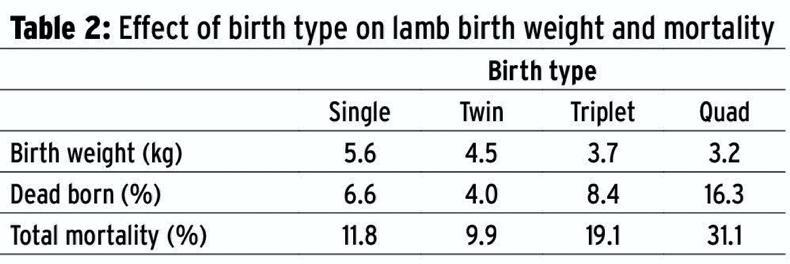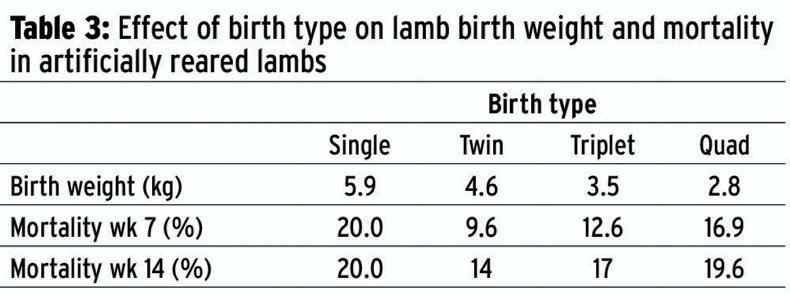Cause of lamb mortality explored
One of the aims of PhD student Dwayne Shiels’ research is to determine the ultimate causes of lamb mortality in grass-based mid-season production systems. Full-term foetuses from 172 lambs in the Athenry research centre were submitted for post mortem, along with relevant detailed information. The causes and timing of mortality are detailed in Table 1.

Mean neonatal mortality across the flocks was recorded at 9.3%, with over half of this mortality recorded at birth. Infection (including abortion and E coli) and dystocia (hard lambing) were the main causes identified.
In a separate presentation exploring the performance of the Athenry Research flock overseen by Tim Keady, Teagasc, data was presented on the effect of birth type on lamb birth weight and mortality. Each one unit increase in birth size reduced lamb birth weight by approximately 20%, with mortality increasing in line with litter size. The analysis also showed that lambs born and reared as triplets were of similar weight at weaning to twins due to concentrate supplementation. Increasing birth type increased age to slaughter relative to singles by 32 days by twins and 42 days for triplets. Tim also presented data which looked at lambs reared artificially from 2006 to 2017. The analysis included records on 467 crossbred lambs (five singles, 114 twins, 227 triplets, 59 quads and 12 quins). The results and lamb performance are shown in Table 2, 3 and 4.









 This is a subscriber-only article
This is a subscriber-only article










SHARING OPTIONS: